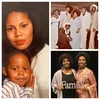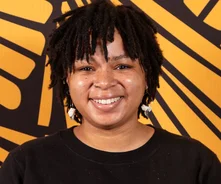Connect with family during Black History Month and beyond

Every year, I look forward to family reunions. From the matching T-shirts to the impromptu line dances, reunions allow my family to pass down traditions and preserve memories across many generations. But now, when social distancing has become the norm, staying connected with family and friends is even more challenging. When meeting in person is impossible, it’s crucial to find ways to get together virtually using technology.
My family, of course, isn’t the only one having to change what reunions look like. This year’s theme for Black History Month, set by the Association for the Study of African American Life and History, is The Black Family: Representation, Identity and Diversity. That’s why Applied Digital Skills, Grow with Google’s free, video-based digital literacy curriculum, created a new collection in honor of Black History Month with a lesson that allows learners of all ages to create a virtual family reunion using Google Slides. This lesson incorporates aspects of culturally responsive learning by centering and valuing students’ cultures and identities, all while learning digital skills.
Yolanda Payne, a teacher fellow from Athens, Georgia, has incorporated the new collection into her students’ curriculum. I sat down with her virtually to talk about her experience integrating technology and culturally relevant lessons into her classroom, and how she’s helping her students connect with loved ones in celebration of Black History Month. (Looking for more? Check out the full collection of lessons from Applied Digital Skills to help you teach or learn about Black history, culture and identity, not just this month but all year round.)
What does Black History Month mean to you?
Growing up, Black history was never really mentioned in the classroom, except during Black History Month. I believe that Black history is every day, not only in February. I was fortunate enough to have parents who taught me about the great Black leaders and the sacrifices they made for us. Magazines like Jet, Ebony and Essence were common sources of knowledge on Black history in our household.
Now, as a teacher, I noticed that my students didn't see themselves or those that looked like them in the history books. Because I knew what it was like to not learn about my culture in school, I’ve made it my mission to incorporate learning about all people in our classroom. Black history is everybody's history if we do it right.
This year’s Black History Month theme is “The Black Family.” How does family play a role in your life?
The pandemic has really made me value my family a lot more. I’m originally from Mississippi, so when talking to my stepdad back home recently, I realized just how much I missed my family. Family is the heart of everything for me, and I haven’t been able to see them in over eight months. Now that we have had to stay apart from those we love, it emphasized for me the importance of having strong familial ties. Without the anchor of my community, I would have felt even more adrift during these tumultuous times.
Yolanda and her son. Top right: Yolanda’s aunt, dad, grandmother, grandfather and uncles. Bottom right: Yolanda’s great aunts.

Tell us about your experience using the Applied Digital Skills Create a Virtual Family Reunion lesson with your students.
I worked with my co-teacher, Mrs. Pamela, to do this lesson with our middle-school students. The students were able to collaborate with their family to create a virtual reunion using Google Slides. I loved the ease of use, the lesson plan and the adaptability. Students watched an overview of what to expect, but could then add their own twist and tailor it to their interests. I really liked the topic of the family reunion because it gives students a way to connect with family or friends in a meaningful way. The lesson is relevant to students' lives and is teaching them the necessary digital skills that many assume they already have. And the lesson isn’t just for students: I plan to try it with my own family, too! My cousins and I have already started planning out our slides in our family group chat.
An example student project used in the Applied Digital Skills Create a Virtual Family Reunion lesson.

Why is it important for you to incorporate lessons like these into your curriculum?
I am fortunate to have open communications with my students about life, culture and what I have encountered in the "real world" as a Black woman. If students feel that their teacher is being their authentic self, it empowers them to do the same. As we discuss cultural and life events, it is important that students see themselves as a part of a larger community and context. It is impossible to tell the whole truth about a community when excluding people who are instrumental in that community.
What role do you see technology playing in your students’ lives in the future?
Digital skills are important for students to function in a literate society. When I was growing up, there was an emphasis on reading, writing and arithmetic. In today's society, we have to include digital literacy skills as a core component because digital learning is embedded in all areas of society.







